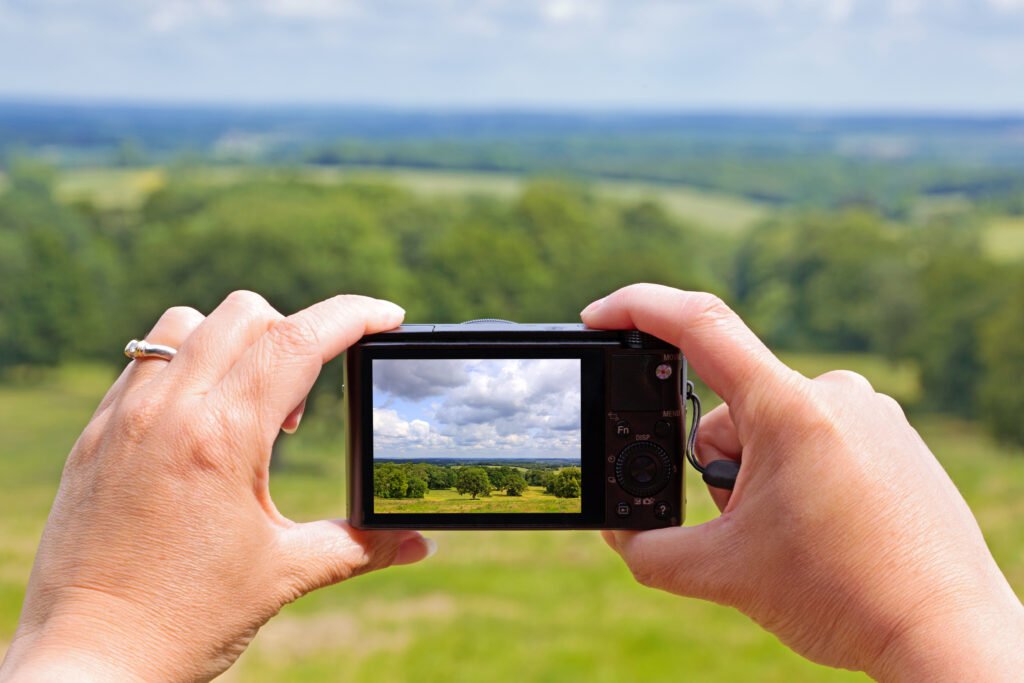
Travelling allows you to go to places you never want to forget. You end up wanting to capture the moments, scenery, things, and people you encounter, and yet your smartphone can’t seem to do so adequately. However, it can also prove challenging to find a camera that’ll do your photos justice without taking up a lot of space in your luggage. Standard digital single-lens reflex (DSLR) cameras are a bit bulky, and you may need to carry extra lenses and an external flash.
Fortunately, the market is now overflowing with smaller, more compact cameras that are travel-friendly. They come with excellent zoom depth, tilting displays, brightness ranges, and high-definition (HD) video capabilities. Their features are similar to those of DSLR but come in a smaller package. They’re meant to make photography accessible to and easy for all.
When choosing a compact or digital camera, it’s crucial to know the features you’ll benefit from the most. But with so many brands and varieties to choose from, what qualities do you look for in a compact camera? Here are just some of them:
- Megapixel Count
Looking at camera ads, including smartphone cameras, it’s obvious that the number of megapixels matters in taking good photos. High-resolution cameras record a great amount of detail, making them better for print photography. More megapixels produce a high resolution that allows you to crop shots or create larger prints without compromising the image quality. To learn more about this matter, consider reading articles from reputable product reviewers. You can start with the SIGMA fp L pre-production review to help you get firsthand information on a particular travel camera with a good resolution.
Still, sometimes the megapixel count isn’t as crucial if you only take photos for digital storage or online sharing purposes. The normal megapixel range for compact cameras is between 12 and 25 megapixels. Anything above 16 megapixels is more than sufficient to give you clear images if you don’t intend on printing the photos.
- Zoom Options And Capability
Another critical feature in compact cameras is its ability to bring things closer. Almost all of these cameras come with a zoom lens that lets you zoom in and out, depending on your preferences. But you need to understand whether the camera utilizes digital or optical zoom. Some cameras have both options.
Digital zoom has a longer zoom range, and it uses magnification technology to make the area of an image larger. But it compromises the image quality because it cuts down on megapixels. As for optical zoom, it changes the physical size of the lens to alter the distance between the subject and the camera sensor. If the camera has 5x optical zoom, the focal length range is five times the shortest length. The image will appear five times bigger when the lens is zoomed to its maximum.
If you consider zooming an important factor in taking photos, order SIGMA fp L or any other compact camera with similar capabilities.
- Facial Recognition
This feature in most digital cameras is technology that distinguishes faces in a scene and determines the best exposure, flash, and focus to flatter each subject. Some are even made to recognize smiles, automatically detecting a smile and taking a photo when one appears. If your photography during travel is mainly focused on people, you’ll need to consider the facial recognition capability of a compact camera.
- LCD Screen And Camera Modes
An excellent compact camera requires a good liquid crystal display (LCD) screen because it gives you accuracy when previewing a shot. A higher-quality LCD offers better visibility and color.
Another essential feature that shouldn’t be left out is the variety in shooting modes. This will allow you to take fantastic photos of any indoor or outdoor scenery. The camera automatically detects and recognizes a scene and adjusts the settings accordingly to capture it in the best way possible.
- Battery Life
This is usually measured by how many shots you can take with one battery charge. You may spend a whole day outside with no means or time to charge your batteries. The battery consumption depends on the number of shots you take, the LCD screen, and other energy factors. Consider a camera that can take a reasonable number of photos before the battery goes dead. However, always carry backup batteries just in case.
- Anti-Shake Feature Or Image Stabilization
When traveling, you’re on the move, and sometimes there may be no time to wait until you can take a perfect picture. This happens mostly when you’re in a moving vehicle. You may find photos getting blurry because your hands shook during a shot. Also, when taking pictures in low light, the camera chooses a slower shutter speed to get better exposure. This can happen even with a firm grip on the camera, resulting in blurred images.
Image stabilization is the remedy for this kind of situation. This is an important feature to consider since you never know when you’ll need a take a photo in low light. The two ways a camera stabilizes an image are sensor movement and optical image stabilization.
Optical image stabilization adjusts the lens to make up for movement. On the other hand, sensor movement changes the sensor position to make up for shakes. Some cameras have digital image stabilization that tries to autocorrect the image after you’ve made the shot.
Final Words
Other features to consider include the camera’s actual size and weight, cost, Wi-Fi capabilities, and type of memory card used. However, your search should primarily be guided by your purpose for the gadget. Are you looking to take photos for memories, professional-quality results, or printing? Once you know what you need the camera for, then you’ll be able to choose the most suitable features for you.



